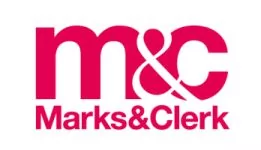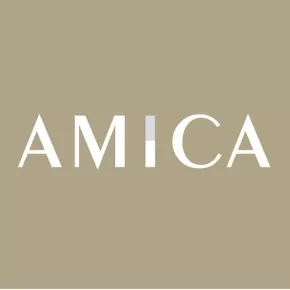The Copyright Act 2021 and subsidiary legislation.
No. Copyright subsists only by virtue of the Copyright Act.
All works which are protectable by copyright law are dealt with by the Copyright Act. However, the subject matter may also receive protection under other IP laws, such as the Registered Designs Act.
The Berne Convention provides for a minimum standard of protection to be granted for authors who are nationals of contracting states.
Singapore also provides reciprocal copyright protection to:
- member states of the World Trade Organization; and
- contracting states of the Berne Convention.
As Singapore is a leading international dispute resolution hub, its courts and tribunals generally emphasise the expeditious and cost-effective resolution of copyright disputes.
The High Court hears and adjudicates copyright disputes. It has specialist judges and procedures to adjudicate IP cases.
The Copyright Tribunal resolves licensing disputes between collective management organisations and users of copyrighted works.
Generally, copyright protects the expression of ideas in tangible forms. The types of works that are protected under Singapore copyright laws include the following:
- Literary works: Books, articles in journals or newspapers, lyrics in songs, source codes of computer programs.
- Dramatic works: Scripts for films or drama, scripts for stage plays and choreographic scripts for shows or dance routines.
- Musical works: Melodies.
- Artistic works: Drawings, paintings, sculptures, photographs, engravings, buildings or models of buildings and works of artistic craftsmanship.
- Others: Films, sound recordings, television and radio broadcasts, cable programmes and performances.
For copyright to subsist under the Copyright Act, the work in question must:
- fall into one of the categories of works protected by the Copyright Act – for example, a literary, artistic, dramatic or musical work;
- be expressed in a material/tangible form (eg, reduced to writing);
- be created by an author who is a qualified person at the time when the work was first published; and
- be original – this does not mean that the work must be novel or unique; rather, the author must have expended a substantial amount of skill or labour towards its creation.
Copyright protects the expression of facts or ideas but not the facts or ideas themselves.
The legal rights conferred by copyright depend on the nature of the work.
For authorial works (ie, literary, dramatic, musical and artistic works), the rights conferred include, but are not limited to, the right to:
- make a copy of the work;
- publish the work if it is unpublished; and
- communicate the work to the public.
The Copyright Act restricts the application of copyright law in relation to an artistic work to a corresponding design that is, has been or could be applied to articles or products, under the Registered Designs Act (RDA) or useful articles. A ‘corresponding design’ is a design which, when applied to an article or non-physical product, results in the reproduction of an artistic work.
Where a corresponding design has been registered under the RDA, it is a permitted use of the artistic work to do, among other things, any act that is within the exclusive rights in the corresponding design while the registration is still in force.
Where a corresponding design has been industrially applied (which includes applying the design to 51 or more articles), but has not been registered under the RDA, it is a permitted use of the artistic work to do, among other things, any act that would have been within the exclusive rights in the corresponding design had the design been registered.
Where an artistic work has been industrially applied, it is a permitted use of the artistic work to make a useful article or a product.
Yes, the Copyright Act provides protection for, among other things, sound recordings, broadcasts and performances.
Copyright in a sound recording includes the exclusive right to:
- make a copy of the recording;
- enter into a commercial rental arrangement;
- publish an unpublished recording;
- communicate the recording to the public; and
- be paid equitable remuneration under specified circumstances.
Copyright in a broadcast includes the exclusive right to:
- make a copy of the broadcast;
- communicate the broadcast to the public; and
- cause a television broadcast to be seen or heard in public by a paying audience.
Among the rights granted for performances, it is an infringing use to:
- directly or indirectly record the performance while the performance is live; or
- make a copy of a recording of the performance without the rights owner’s authority.
Yes, moral rights are protected in Singapore. The Copyright Act provides for the following rights, among others:
- the right to be identified;
- the right against false identification; and
- the right not to have altered copy represented as unaltered.
An author’s moral rights are personal to the author and not assignable.
The aforementioned moral rights apply only in relation to an authorial work in which copyright subsists and for the period during which copyright subsists in the work. The rights apply in relation to the whole or any substantial part of the work.
The author of an authorial work may bring an action in court against any person that infringes any of his or her moral rights. The remedies that the court may grant for an infringement of moral rights include injunctions and damages.
However, the moral rights of an author are not infringed by any act or omission to which the author consented. An author may also formally waive his or her moral rights.
The Copyright Act provides a general defence to fair use to copyright infringement. In considering whether use of a copyrighted work is fair and thus permitted, the following matters are considered:
- the purpose and character of the use, including whether the use is of a commercial nature or is for non-profit educational purposes;
- the nature of the work or performance;
- the amount and substantiality of the portion used in relation to the whole work or performance; and
- the effect of the use on the potential market for, or value of, the work or performance.
The Copyright Act also provides specific exceptions to copyright infringement, such as copying or communicating for the purpose of computational data analysis.
Copying or communicating for the purpose of computational data analysis (CDA) is a permitted use of a copyrighted work and does not infringe copyright. ‘CDA’ refers to:
- using a computer program to identify, extract and analyse information or data from the work; and
- using the work as an example of a type of information or data to improve the functioning of a computer program in relation to that type of information or data.
The copyright owner’s interests are protected by, among other things, the requirement of lawful access to the copyrighted works. While the scope of ‘lawful access’ is not defined by the Copyright Act, it is not lawful access to:
- breach the terms of use of a database to access a work; or
- circumvent paywalls.
While the Copyright Act contains prohibitions on circumventing access control measures to copyrighted works, it also provides exceptions relating to:
- achieving interoperability between computer programs; and
- repairing or replacing an essential or emergency system.
A person may circumvent a technological measure in relation to a copyrighted computer program where:
- the protected copy is not an infringing copy;
- the act is done in good faith, with respect to elements of the computer program that are not readily available and for the sole purpose of achieving interoperability of an independently created computer program with another computer program; and
- the act does not infringe the copyright in the computer program.
A person may circumvent an access control measure that has been applied to a computer program if:
- the computer program is used in an essential or emergency system; and
- the circumvention is solely for the purpose of enabling the replacement or repair of the computer program.
Provided that a derivative work meets the criteria for copyright subsistence (eg, originality), a derivative work may be protected by copyright. The author or creator of a work is generally the first owner of the copyrighted work by default.
Yes, copyrightable works also be protected by other IP rights, such as trademarks and designs. The scope of protection afforded to copyrightable works by other IP rights may differ and copyright protection may be limited to restrict dual protection (eg, see question 3.2).
The duration of copyright depends on the nature of the copyrighted work. In general, copyright in an authorial work expires 70 years after the end of the year in which the author dies.
The requirements for publication depend on the nature of the copyrighted work. In general, an authorial work is published where copies of the work have been supplied to the
The Copyright Act does not provide for the revival or extension of copyright.
The author or creator of a work is generally the first owner of the copyrighted work by default, including creators who are commissioned to create content.
One exception to this general position is for employee-created content. For such works, the employer is the default copyright owner of the content created by employees in the course of their employment.
The default position that the author or creator of a work is by default the owner of the copyrighted work is also subject to contract. For instance, in the case of a commissioned work, parties can agree in writing to reverse the default position such that the commissioner owns the copyright.
Yes, copyrighted works can:
- be owned by companies or corporate entities; and
- be jointly owned by multiple parties.
On corporate ownership, a company or corporate entity can own the copyright in a work. This typically happens when a work is created by employees in the course of their employment, where the company is by default the first owner of the copyright. Corporate ownership can also arise through the assignment of copyright from an owner to the company.
Joint ownership may arise where, for example, a work is created through the collaboration of multiple authors, each of whose contribution is not capable of being separated from the others. In such situations, the joint authors will have joint ownership of the work, unless the authors agree otherwise.
Ownership of a copyrighted work can be transferred by written agreement between the parties. Moral rights are separate from and additional to copyright. They cannot be transferred.
For employee-created works, the employer is the default owner of all types of copyrighted content created by employees in the course of their employment. To further secure its rights to the works, the employer may include provisions on ownership of the works in its employment agreements with employees.
A work that is commissioned is by default owned by the creator of the commissioned work, not the hiring party. However, this is subject to contract and the parties may agree in writing that the commissioner owns the copyright.
No.
Not applicable.
Not applicable.
Not applicable.
Not applicable.
Not applicable.
Not applicable.
Not applicable.
It is an act of infringement to do or authorise the doing in Singapore of any act comprised in the copyright without the authorisation of the copyright owner. The exclusive rights of the copyright owner will depend on the type of copyrighted work.
Authorial works such as literary, dramatic, musical or artistic works are infringed when they are reproduced in a material form. There can also be an infringement of copyright if an authorial work is communicated to the public – this includes:
- broadcasting the work, including it in a cable programme; and
- making the work available in a way that makes it accessible by any person on demand.
Secondary liability for copyright infringement is recognised in Singapore. Secondary liability may arise, among other things, where:
- a person deals commercially in an article and the making of the article infringes copyright; or
- a person makes devices or provides a service to access works communicated without the copyright owner’s authority.
The Copyright Act provides safe harbour provisions for online intermediaries. Provided that certain conditions are met, the safe harbour provisions restrict the remedies available against a network connection provider (NCP) or network service provider (NSP) for rights infringements arising from:
- transmission;
- routing or providing connections;
- system caching;
- storage; or
- locating information.
For NCPs, the safe harbour applies if, among other things, the NCP did not:
- initiate or direct the transmission;
- decide what gets transmitted;
- select the recipients; or
- substantively modify the content.
For NSPs, the safe harbour applies if, for instance, they expeditiously take reasonable steps to remove or disable access to the infringing content.
Yes. There is criminal liability for various acts of infringement in the Copyright Act, such as:
- commercial dealing in infringing copies;
- infringement for commercial advantage;
- making articles capable of making infringing copies; and
- wilful and significant infringement.
An action may not be brought for an infringement of copyright more than six years after the infringement takes place.
An action for copyright infringement may be brought by the copyright owner or the exclusive licensee.
The aggrieved party may issue a pre-action letter to the alleged infringer demanding that it cease and desist from their act(s) of infringement. Parties may also consider alternative dispute resolution options, such as private negotiations or mediation, to resolve the dispute at an early juncture.
The aggrieved party may commence a suit in the High Court against the infringer by filing an originating claim. Depending on the complexity of the matter, taking the dispute all the way to a judgment could take between two and three years.
The Supreme Court of Judicature (Intellectual Property) Rules 2022 provide an optional track for IP disputes, referred to as the ‘simplified process’. The simplified process aims to provide a quicker and more cost-effective dispute resolution system in Singapore. This generally caters to matters:
- which are less complex; and
- where the claimant is willing to abandon any claim for monetary relief in excess of S$500,000.
The simplified process typically entails shorter timelines and active case management for the case to proceed expeditiously.
The fees and costs incurred in infringement actions can include:
- the costs of investigatory activities;
- the costs of issuing pre-action letters;
- court filing fees;
- legal fees; and
- the costs of discovery and expert witnesses.
These costs can vary depending on:
- the complexity of the case; and
- the length of the proceedings.
These costs may be reduced if the dispute goes through the simplified process.
The typical defences available to a defendant in copyright litigation include, but are not limited to, fair use.
The remedies that are available for copyright infringement include:
- injunctions;
- damages;
- an account of profits;
- statutory damages;
- a delivery up order; and
- a disposal order.
Criminal offences relating to copyright infringement are punishable by fines and/or imprisonment. The quantum of the fine and the term of imprisonment will depend on, among other things:
- whether the offence committed had a commercial element; and
- the extent of the infringement.
Border enforcement measures against infringing goods are available. A rights owner or authorised licensee may request the seizure of goods if it suspects that the goods are infringing. Customs officials are empowered to search for, inspect and seize infringing goods on their own motion.
Damages are available for copyright infringement. A claimant may alternatively elect for statutory damages. Further, the court may order additional damages if appropriate, having regard to all relevant matters, including:
- the flagrancy of the infringement; and
- any benefit derived from the defendant from the infringement.
In general, statutory damages are not to exceed:
- S$10,000 for each work or performance that is the subject of the action;
- S$200,000 for all works that are the subject of the action; and
- S$200,000 for all performances that are the subject of the action.
The court must consider all relevant matters in deciding the range of statutory damages to award, including:
- the nature and purpose of the act constituting the infringement, including whether it is of a commercial nature or otherwise;
- the flagrancy of the infringement;
- whether the defendant acted in bad faith;
- any loss that the claimant has suffered or is likely to suffer because of the infringement;
- any benefit gained by the defendant because of the infringement;
- the conduct of the parties before and during the proceedings; and
- the need to deter similar infringements.
An appeal of a judgment by the General Division of the High Court in relation to copyright is made to the Appellate Division of the High Court. The procedure typically entails:
- applying for leave to appeal for certain cases;
- filing a notice of appeal; and
- filing the appellant’s case.
Yes. For digital and online content, there are specific enforcement measures available under Part 6, Division 2 of the Copyright Act, for example. Pursuant to Section 325 of the Copyright Act, an application may be made for the court to disable access to a flagrantly infringing online location. The specific procedure for making the application is set out at Section 326 of the act.
Copyright owners may consider taking the following measures to prevent infringement of their rights:
- using access control measures and technological protection measures;
- monitoring the market for infringing activity;
- issuing cease and desist letters to infringers; and/or
- working with intermediaries to remove infringing content from online platforms.
Generally, licences can be broadly categorised as exclusive or non-exclusive. Exclusive licences grant the licensee the sole right to use the copyrighted work in a particular manner, to the exclusion of others. Non-exclusive licences allow the licensee to use the copyrighted works but the copyright owner retains the right to grant the same or similar licences to others.
The specific terms included in a copyright licence are highly dependent on the needs and demands of the parties involved. Generally, licences cover aspects such as:
- the scope of use;
- duration;
- territory;
- exclusivity; and
- compensation.
However, the exact terms vary widely depending on:
- the nature of the work;
- the relationship between the parties; and
- the intended use of the copyrighted material.
Yes, in Singapore, there are collective management organisations (CMOs) which are appointed by rights owners to manage the rights in their copyright works. Generally, CMOs administer:
- the licensing of rights;
- the collection of royalties; and
- the enforcement of rights on behalf of the rights owners.
CMOs also monitor the use of works and collect licence fees on behalf of rights owners.
The Copyright Act establishes a regulatory framework for CMOs under a class licensing scheme administered by the IP Office of Singapore. Under this scheme, all CMOs must comply with applicable class licence conditions.
No.
Under the CMO regulatory regime, CMOs must comply with a set of licence conditions that regulate various areas, including the distribution of tariffs (royalties). On this, CMOs must establish and comply with a distribution policy that governs the following critical aspects:
- Calculation of tariffs: CMOs’ distribution policies must provide for how they calculate tariffs, which should be based on actual use of a member’s portfolio to the extent practicable.
- Regular distribution to members: CMOs must specify the frequency and manner of distribution in their distribution policies.
- Dealing with undistributed tariffs: CMOs must set out in their distribution policies how they deal with tariffs that they are unable to distribute despite their best efforts.
- Collection and provision of information on use of portfolios: CMOs must:
-
- collect certain key information upon the use of their portfolios; and
- give the information to members when making a distribution or upon request.
- Members’ right to query and dispute distributions: The distribution policy must set out how members can query and dispute their distributions.
No.
An exclusive licence of a copyright is valid only if it is:
- made in writing; and
- signed by or on behalf of the owner or prospective owner of the copyright.
There are no special provisions in the Copyright Act that govern sub-licensing.
Yes, foreign copyrighted works are protected in Singapore. The provisions of the Copyright Act are extended in relation to reciprocating countries. A country is a reciprocating country if it is:
- a party to the Berne Convention; or
- a member of the World Trade Organization.
Copyright in a published authorial work expires upon the expiry of the equivalent protection of the work under the law of the country of origin of the work.
Singapore has a robust digital economy and online infringement is a significant concern. Foreign copyright holders should be prepared to monitor and enforce their rights actively. This may involve working with local legal counsel to:
- issue takedown notices;
- send cease and desist letters; or
- pursue litigation if necessary.
As there is no system for copyright registration in Singapore, keeping detailed records relating to authorship and ownership can be important in enforcement efforts.
The copyright landscape in Singapore has evolved significantly to keep pace with the growth of the technology, e-commerce and Singapore’s creative industries. The Copyright Act, which came into force in 2021, represents a timely update and enhancement to Singapore’s copyright framework to account for technological developments and balance the rights of rights owners and users.
Rapidly developing artificial intelligence (AI) technologies have raised questions about copyright protection for works generated by AI models. Further, AI models raise concerns over whether the use of copyrighted works to train AI models constitutes infringement. This is an emerging legal issue worldwide and Singapore is likely to closely monitor legal developments relating to AI in other jurisdictions (eg, AI litigation and legislation) in developing its local laws and guidelines.
Further, as Singapore’s digital economy grows, there is an increasing focus on copyright protection online. Streaming services, e-commerce platforms and social media have raised concerns about unauthorised reproduction and distribution of content.
These trends represent ongoing opportunities and challenges for rights owners and users, and remain key areas to watch in the future.
Anticipated developments: The Copyright Regulations prescribe circumstances where a person may circumvent technological measures that control access to copyright works or protected performances (‘access control measures’). The prescribed exceptions – which currently include access computer programs in obsolete formats and cybersecurity research by cybersecurity professionals – are updated regularly and will expire on 31 December 2024. In 2024, the Ministry of Law and the IP Office of Singapore conducted a public consultation on situations in which users should be permitted to circumvent access control measures. The exceptions that will be prescribed pursuant to this public consultation will commence on 1 January 2025.
Copying or communicating for the purpose of computational data analysis (CDA) is a permitted use of a copyrighted work and does not infringe copyright. This exception, introduced in 2021, is highly relevant to the training of generative AI.
‘CDA’ refers to:
- using a computer program to identify, extract and analyse information or data from the work; and
- using the work as an example of a type of information or data to improve the functioning of a computer program in relation to that type of information or data.
The copyright owner’s interests are protected by, among other things, the requirement of lawful access to the copyrighted works. While the scope of ‘lawful access’ is not defined by the Copyright Act, it is not lawful access:
- to breach terms of use of a database to access a work; or
- to circumvent paywalls.
No.
Protecting your copyrighted works in Singapore is essential to safeguard your intellectual property. Our top tips are as follows:
- Understand what can be protected: In Singapore, copyright protection automatically applies to works such as literary, dramatic, musical and artistic works. However, your content may be better protected under other IP regimes such as patent, design or trademark law. Knowledge of your rights and remedies under other IP laws is important to understand the benefits and costs of exploiting and enforcing your intellectual property.
- Maintain proper documentation: Proving authorship or ownership in a copyright dispute may be challenging without proper documentation. Keeping detailed records can strengthen your position.
- Clarify your rights: Ambiguous or poorly drafted agreements can lead to disputes over the scope of the agreement or the rights granted. It is important to clearly define the terms of use of your work through contractual agreements. This may include terms such as:
-
- ownership of the work; and
- the scope, duration and conditions under which the work may be used by others.
- Leverage technological measures: Employing digital rights management and other technological measures to control access to your digital works may prevent unauthorised copying. However, such measures may not be appropriate for all types of works and can sometimes be circumvented.
- Monitor and enforce your rights: Regularly monitor the market to ensure that your works are not being used without permission. If you find unauthorised use, you are recommended to seek legal advice and take appropriate action promptly, such as through a cease and desist letter or legal proceedings if necessary. Enforcement can be costly and time-consuming. A legal professional can assist you to weigh the potential costs against the value of the work in deciding how to proceed.
- Be aware of international issues: Copyright laws differ by country. The rights and remedies for copyright owners in another country may differ from those in Singapore. Consider seeking advice on how best to protect your work internationally.
- Seek legal advice when in doubt: The legal and technological landscape for copyright protection is continually evolving, requiring copyright owners to stay informed and adapt their strategies accordingly. Advice from a legal professional who specialises in intellectual property can help you to navigate the complexities of copyright law.







